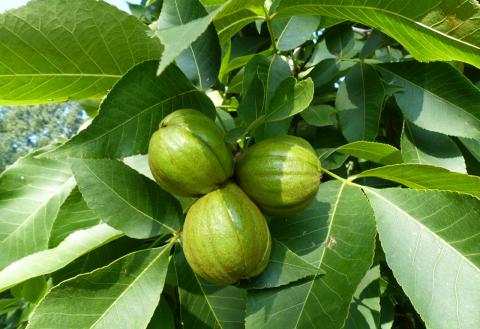CMSGT (Retired) Dana R. Rogers | Originally published in GameKeepers: Farming for Wildlife Magazine. To subscribe, click here.
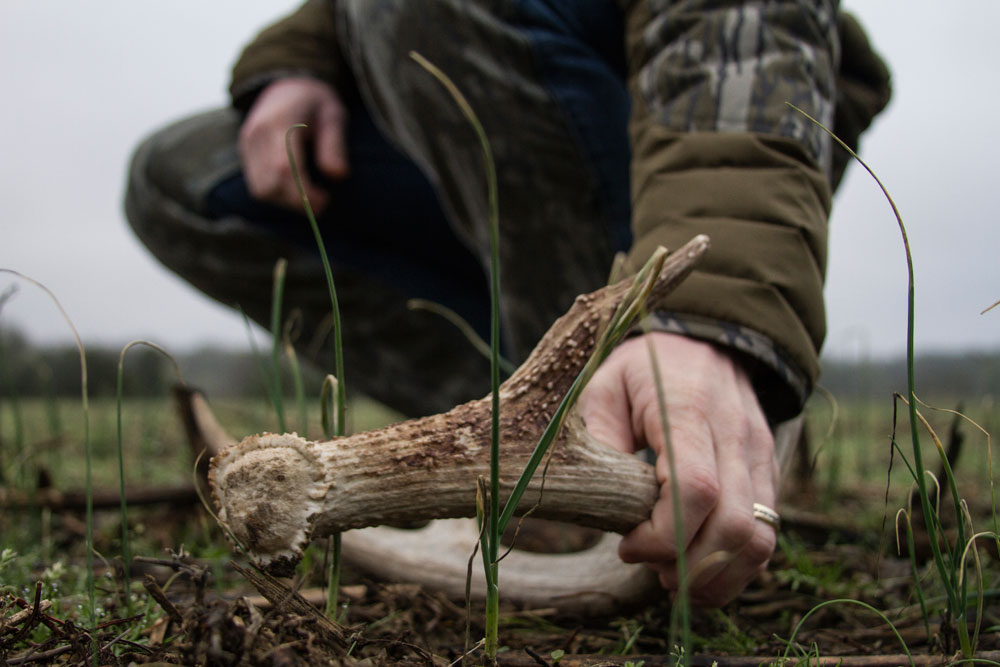
If you are reading this, you are most likely a very serious deer hunter. If, like many of us, you get the “off-season blues,” a great way to extend your “hunting season” is by getting out this winter/spring and looking for signs and shed antlers. A late winter foray always seems to help me cure the post-season blues.
A great way to scout for the coming season and help you determine which bucks made it through the last season is to find visual proof in the form of cast antlers. Shed antler hunting has become increasingly popular over the last decade or two. Deer hunters and managers can acquire valuable information about animal behavior when finding sheds. This information aids in piecing together a hunting strategy or management plan for the next season.
There are myriad reasons why shed hunting has become such a popular activity. If you don’t think it can be exciting, you’ve probably never spent much time trying it. Before we delve into shed hunting and how to find antlers, let’s take a few minutes to go over some shed hunting base lines.
Whitetails can begin dropping antlers in late December, but the majority seem to drop during February and March across most of the country.
If they’re stressed, injured or in very poor condition they tend to drop earlier. Generally, the older bucks that do most breeding tend to drop their antlers earlier than younger bucks. As noted, a severe winter or other habitat conditions could stress deer, which results in bucks shedding earlier. I’ve witnessed, and have several trail camera photos of bucks still carrying antlers during early April, but these are almost always yearling bucks that probably weren’t heavily involved in breeding.
I typically wait to begin shed hunting until mid-February, but the bulk of my efforts come during early to mid-March. By that date the majority of bucks will have dropped their bone. Some shed hunters like to begin much earlier, hoping to get a jump on the competition.
I STRONGLY urge hunters to wait until mid to late February, particularly in areas of the north that get harsh winter weather and have low-quality forage. There are good reasons why some state game and fish departments have bans or start dates on picking antlers. The stress on wintering wildlife can be extremely damaging. These deer are stressed in many areas and pushing them around causes them to use up what little energy stores they still have.
That’s why I personally prefer that “sweet spot” of late February and March. You don’t want to search too early when many bucks may still have their antlers. Then all you do is push them, perhaps onto property you can’t access. Going too late can also have negative ramifications. An early spring green up and a flush of new growth can hide antlers you may have seen when the cover was bare. Don’t forget that those beautiful early April days with warmer temperatures can also bring on insects, particularly ticks.
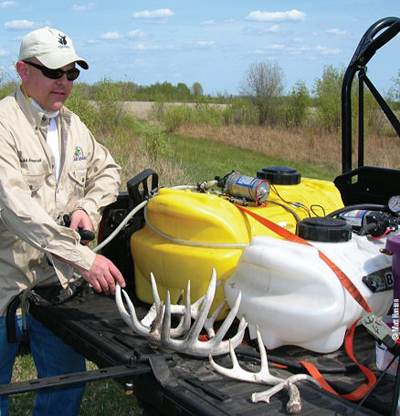
they must. Search bedding areas, primary food sources
and the routes in between. If the sheds are in one of your
food plots, you’d better hope you find them before a tractor
or ATV tire does. These were all found in one pass through
a two-acre brassica plot while spraying the following spring.
So how and where do we find shed antlers? Shed hunters can break down the “high success areas” into three main locations - bedding areas, feeding areas and the travel corridors in between.
Bedding areas are typically spots where animals spend most of their day. During this time of the year they’ll often be in or near thick cover, on south facing slopes, or other areas that offer them a wind-break or thermal cover. They like to bed in tall grasses, brushy thickets and heavily wooded pockets of timber. In some areas of the country that might mean cedar thickets, native grass stands or cattail sloughs. When winter hits, whitetails tend to prefer south-facing slopes to expose themselves to sunlight to increase their external body heat and preserve energy.
Deer often bed in the same general area for the majority of the day. In the northern reaches, it can be easy to find these bedding areas because of the obvious beds in the snow or matted grass. However, you’ll want to wait to check out any bedding areas for shed antlers until you know that bucks have dropped, to avoid chasing them to a neighboring property before they’re ready.
During winter, deer often need thermal cover to protect them from the cold temperatures and winds. Some habitat types to key on include; tall grass plantings, thick cattail swamps, or CRP areas planted in switchgrass, big bluestem, or Indian grass. These grasses and shrub cover shield deer from icy winds and stay upright through ice accumulation and heavy snows. And since they are usually located in close proximity to agricultural fields and make for a convenient bedding area. Dense cattail swamps offer similar protection as they protect deer from cold winds. Finding shed antlers in the tangled thick grasses or cattails isn’t easy though. You’ll need to stick to trails and beds to find them. A good “shed dog” is a great partner in this habitat.
In northern regions, outside of the farm belt, dense conifer stands offer a similar level of protection. The dark green canopy absorbs and holds the sun’s energy, warming the area. Full canopy pine and cedar forests help filter out snow, which keeps the snow levels in the understory low. Deer may occasionally shift to bed on the southern edges so they can soak up the sun’s warmth while still being protected from the north’s icy winds. During the high stress winter months, deer focus on conserving energy and replenishing those levels by feeding. Thus, shed hunters should know and focus on primary feeding areas.
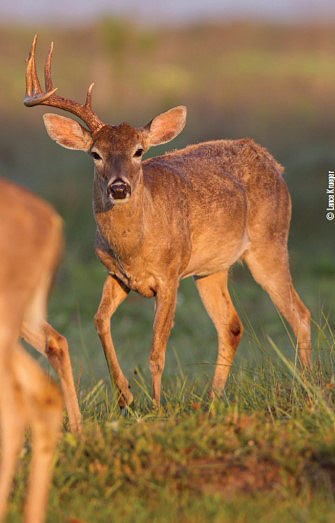
December or as late as April, but most should
“cast their crown” during February or March.
Many shed hunters prefer to focus on feeding areas. Since deer are “crepuscular” (doing most of their activity at twilight) we know that deer will spend the majority of their day bedded somewhere and get up to feed during lowlight times. It makes sense then, that deer are more likely to shed their antlers in one of these two areas (bed or primary food source) since that’s simply where they spend most of their time.
Crop fields, food plots, pockets of mast crop or even water sources are places to focus on. Throughout much of the Midwest, corn, brassica and soybean fields are primary feeding areas. Post-harvest they will scavenge waste grains on the ground or scrounge for the last remaining brassica leaves. If you can find one of these that still has food in it during February and March, you are in the chips. Food plots with grains or brassicas offer an irresistible attraction in northern climates. With all the deer gathering in these fields, you have a much better chance of finding sheds there.
Throughout some of the whitetails’ range, “winter browse” is a more important part of a whitetail’s diet than crops. Deer are adapted to have reduced metabolisms during the winter, and their digestive tracts even adapt to include microorganisms to efficiently digest the harder to break down, fibrous browse. While you might be able to find young growth areas on your property, they will likely be scattered around and hard to pinpoint. But if you have any recently cut areas from the year before, there is sure to be an abundance of young growth for deer to browse.
After drilling down and searching bedding and feeding areas, I always thoroughly search the travel corridors or trails in between. There should always be pretty distinct travel corridors the deer use during this time. They do not spend extra energy unless they have to, so it’s from bed, to feed, and back to bed again. These trails are very easy to notice in the winter, whether there is snow on the ground or not. Focus on these high-traffic areas and take the time you need to look thoroughly. Don’t just casually walk through the area; use your eyes to really scan the ground for any part of an antler. Key in on areas where a buck might jar his antlers loose - like; where they jump a fence, or ditch and creek crossings.
Just like there are better places to look, there are better ways to find them. As mentioned, I always monitor the local herd with trail cameras so that I know when most of the local bucks have shed before I set foot in their bedroom. You can also use binoculars to scan fields and open woodlots to check on the “carrying” status of the deer.
When the season and conditions are right, and your monitoring shows you that the majority of deer in the area have shed, it’s time to “make haste” to pick up that “brown gold.” I do shed hunt alone quite a bit, but I have good friends and family that also love to join in on the endeavor. Using a few strategies or methods can help increase your pick up rate.
Draw a map and put grids over a quadrant. By gridding the area and keeping everyone in line and fairly close (perhaps 20 yards apart depending on visibility) enables you to recover antlers you would have otherwise missed. Using this grid map approach allows us to cover all the ground as efficiently and with as many eyes as possible.
In more open or broken terrain, without all the timber cover, using a 4-wheeler or a horse can also really aid in coverage. Shed hunt where you would late-season deer hunt. If you have a dog with a good nose, they can also be of great value. Dogs can cover far more ground, and are a lot more willing to go into those dense tangles that we avoid. Some dogs have a natural instinct for it while others can be trained. They already have an instinctive nature to sniff out interesting objects like bones. Since “antler” is “bone” using a dog to find additional sheds makes sense.
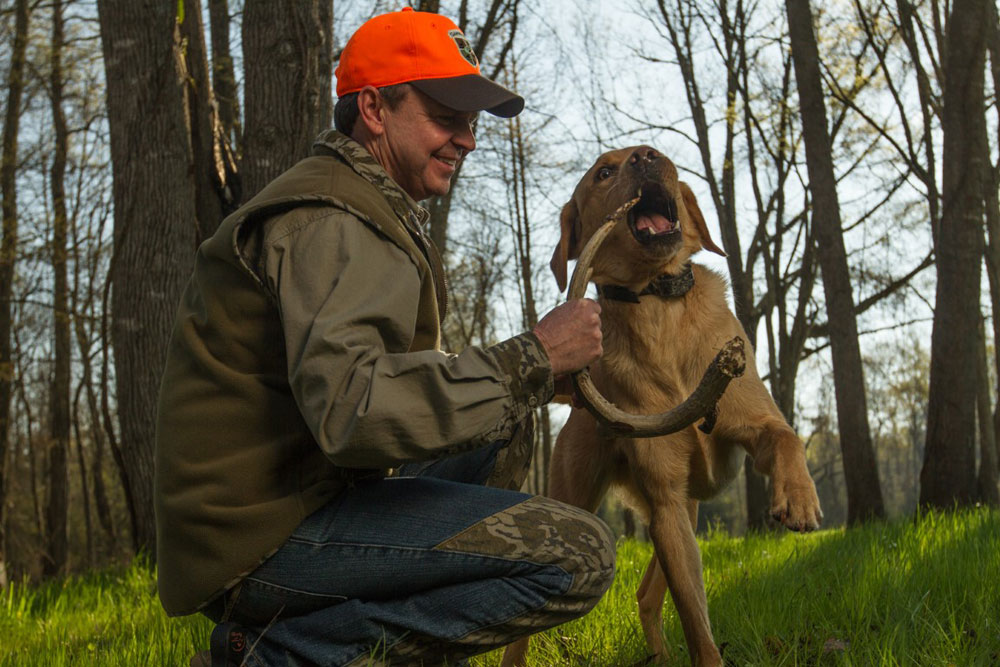
I feel that individual bucks may have distinct shedding patterns. Where you find one shed, it’s a good bet that there will be more in the same general area. It may be because good thermal cover with sanctuary and food are in very short supply, or there’s something else about the spot that offers whitetails an advantage.
I have my best luck spotting sheds on cloudy, overcast days. Combine cloudy conditions with a little rain, and it seems that sheds “pop” in the indirect light conditions and are very visible. The rain gives the antlers a shine, and it also darkens the leaves and other vegetation around them. The contrast is often what catches my eye. Another trick I like to use on sunny days is to put the sun to my back and try to pick up the shine on what are usually fairly white prairie whitetail antlers ( in my area).
These are all good points to think about before considering getting out this winter. In general, “shedding” begins a month or two after the rut, about the same time that bucks, depleted from the rigors of the rut, are seeking out concentrated food sources. Start your search in and around bedding or feeding areas, but follow that up by tracing trails through thickets, cattails and native grass stands in between their bed and feed.
Please remember not to go too early so you don’t put unnecessary stress on the animals. Wait until most of the snow cover is gone. Focus on areas where deer usually winter or where you’ve seen them during the late season or post season. After an especially tough winter with a lot of snow, I start glassing south-facing slopes. But after an easy winter, those sheds can be just about anywhere, from the grassy bottoms of canyons to the ridge-tops.
If you want to learn as much as you can about your local deer patterns, like travel corridors, bedding or feeding areas, the late winter is one of the best times. Besides finding a few sheds, you can learn much about your property and about your deer herd. Scout for next season while searching out those “survivors” is an awesome late winter activity. Get out there and have fun in God’s great outdoors.

















